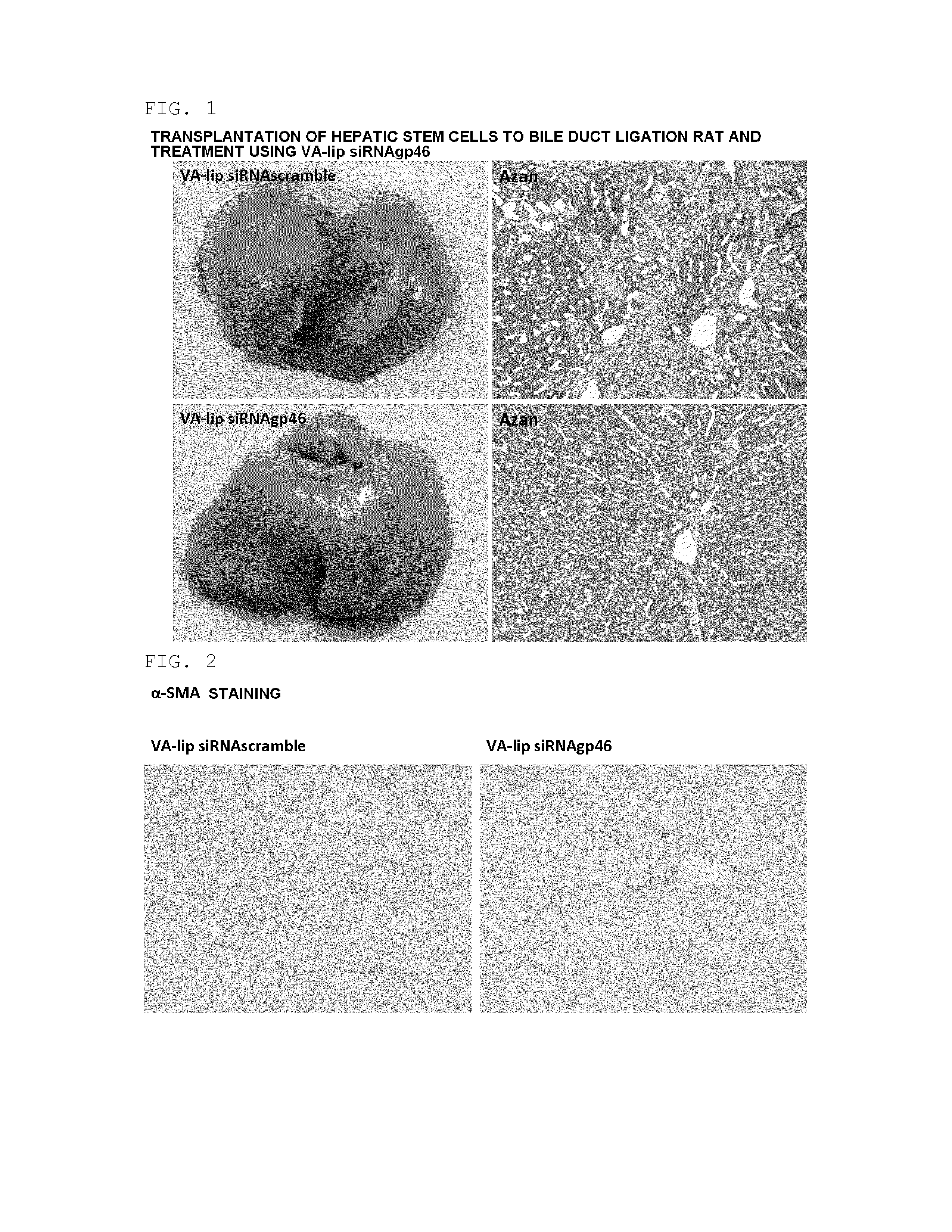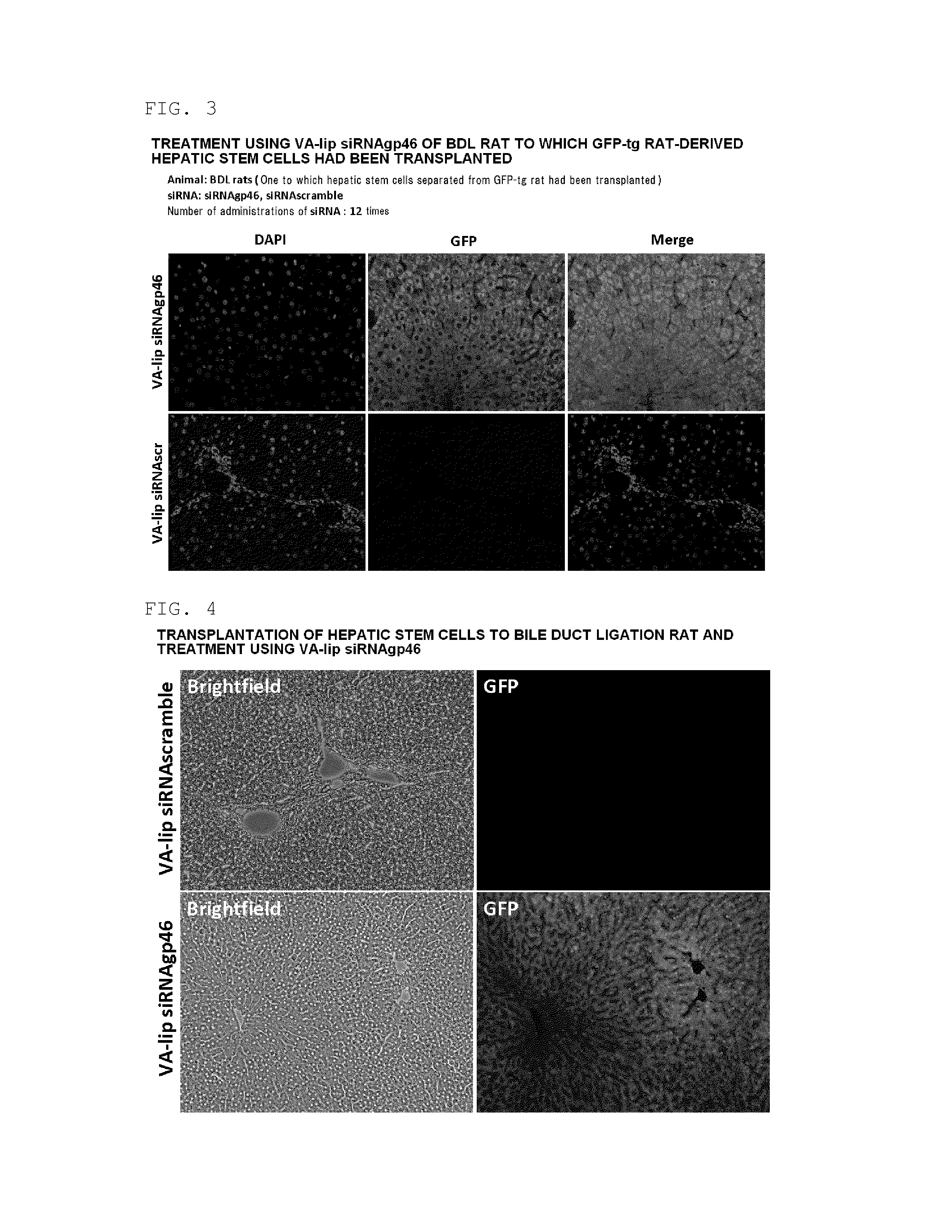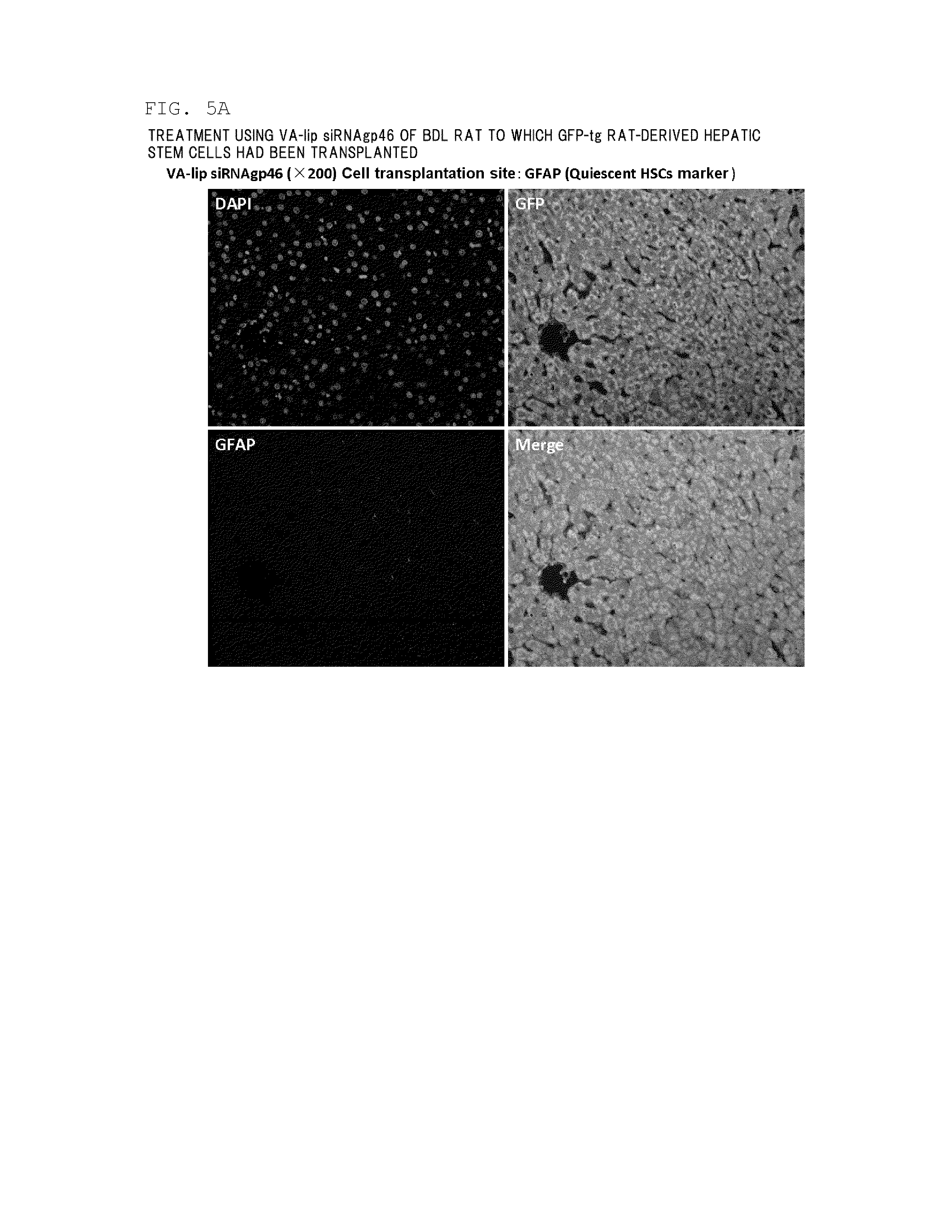Composition for regenerating normal tissue from fibrotic tissue
- Summary
- Abstract
- Description
- Claims
- Application Information
AI Technical Summary
Benefits of technology
Problems solved by technology
Method used
Image
Examples
example 1
Preparation of VA-lip siRNA
[0092](1) Preparation of siRNA
[0093]As a sense chain and an antisense chain of siRNA (Hokkaido System Science Co., Ltd., Sapporo, Japan) targeted to the base sequence of gp46 (GenBank Accession No. M69246), which is the rat homologue of human HSP47, a molecular chaperone common to collagens (types I to IV), those below were used.
A:GUUCCACCAUAAGAUGGUAGACAACAG(sense chain siRNA starting fromthe 757th base on the gp46 basesequence, SEQ ID NO: 1)B:GUUGUCUACCAUCUUAUGGUGGAACAU(antisense chain siRNA, SEQ ID NO: 2)
[0094]As siRNA random (also called siRNAscramble), those below were used.
C:CGAUUCGCUAGACCGGCUUCAUUGCAG(sense chain siRNA, SEQ ID NO: 3)D:GCAAUGAAGCCGGUCUAGCGAAUCGAU(antisense chain siRNA, SEQ ID NO: 4)
[0095]In some experiments, sense chains having 6′-carboxyfluorescein (6-FAM) or fluorescein isothiocyanate (FITC) conjugated to the 5′ terminal were used. It was confirmed by a BLAST search that these sequences did not have homology with other known rat mRN...
example 2
Regenerative Therapy Experiment Using Hepatic Fibrosis Model Rat
(1) Preparation of Hepatic Fibrosis Model Rat
[0097]A hepatic fibrosis model rat was prepared by subjecting a male SD rat (body weight 150 to 200 g) (Slc Japan, Shizuoka, Japan) to common bile duct ligation, and an individual on the 28th day after ligation was subjected to the present experiment. The present model rat was in a state in which cholestasis was caused by the common bile duct ligation and the liver tissue was continually exposed to a fibrotic stimulus.
(2) Preparation of GFP-Labeled Rat Hepatic Stem Cells
[0098]GFP-labeled rat hepatic stem cells were harvested from the liver of a 4 week old GFP transgenic rat (Slc Japan). First, an EGTA solution and a collagenase solution were perfused through the GFP transgenic rat, the liver was then harvested, and the harvested liver was finely cut and then filtered using a cell strainer (pore diameter 100 μm). Hank's balanced salt solution (HBSS)+0.25% bovine serum albumin ...
example 3
Stellate Cell-Specific Delivery by Means of VA
(1) Isolation of Rat Pancreatic Stellate Cells (PSC)
[0113]Rat pancreatic stellate cells (PSC) were isolated using a density gradient centrifugation method in accordance with a previous report (Apte et al. Gut 1998; 43: 128-133). Purity was assayed by microscopic examination, autofluorescence of endogenous VA, and an immunocytochemical method using a monoclonal antibody (1:25, Dako) for desmin, which is a muscle actin crosslinking protein. The viability of cells was assayed by trypan blue exclusion. Both the cell purity and the viability exceeded 95%. The cells were cultured in Iscove's modified Dulbecco's medium (Iscove's modified Dulbecco's medium: IMDM) supplemented with 10% fetal bovine serum (FBS) at 37° C. with 95% air / 5% CO2 under a humidified environment.
(2) Intracellular Distribution Analysis of VA-lip siRNAgp46-FAM
[0114]Rat pPSCs (primary pancreatic stellate cells, primary PSC) were sown so that there were 1×104 cells per chambe...
PUM
| Property | Measurement | Unit |
|---|---|---|
| Mass | aaaaa | aaaaa |
| Mass | aaaaa | aaaaa |
| Mass | aaaaa | aaaaa |
Abstract
Description
Claims
Application Information
 Login to View More
Login to View More - R&D
- Intellectual Property
- Life Sciences
- Materials
- Tech Scout
- Unparalleled Data Quality
- Higher Quality Content
- 60% Fewer Hallucinations
Browse by: Latest US Patents, China's latest patents, Technical Efficacy Thesaurus, Application Domain, Technology Topic, Popular Technical Reports.
© 2025 PatSnap. All rights reserved.Legal|Privacy policy|Modern Slavery Act Transparency Statement|Sitemap|About US| Contact US: help@patsnap.com



